Developed alongside of the Lumimyrsky (Blizzard), this aircraft differed from its cousin design in that it was developed from the attack aircraft variant to serve as a night fighter. While the aircrew armor was retained much of the remainder was removed to lighten it for additional equipment and performance. In terms of additional equipment, it included the first starlight goggles developed from the early German starlight scopes and the nose was clean of armament. In its stead the Limimyrsky II carried an exact replica of the British Airborne Interception radar Mk.VIII or AI Mk.VIII for short, now produced and distributed by Zeiss-Ikon as well as Lorenz in Germany. Armament was configured for 3 LKK R.213(c) 2 cm Cannons in the ventral dustbin, 2 MG 131 13 mm Machine-Guns in a Schräge Musik style mount firing Armor Piercing-Incendiary rounds and a pair of underwing 7.5 cm rocket pods with a total of 14 rockets - each with a blast radius of approximately 90 feet.
With the allies using large and vulnerable jet bombers not quite capable of reaching the speeds of the Lumimyrsky II, and the time-lag in developing further radar during the occupation of Britain, rearward facing radar was still not a reality, turning these stalkers in the night into true butchers.
Allied fighters were more worrisome in this late stage of the war as they could zero in on Axis night-fighters if they strayed too far from the bomber stream however not even the allies had yet developed a jet fighter that could outmaneuver the outstanding flight characteristics of the Lumimyrsky II and attempting to use energy fighter tactics against an enemy clinging close to an allied bomber stream, would be just asking for a midair collision. Meanwhile, the exhaust system of the Lumimyrsky II did not provide any flash, just superheated air, while the allies conversion to purely jet power resulted in a bright glow that could be traced across the sky for, quite literally, miles.
This situation often results in a game of cat and mouse in which allied fighters would dart here and there seeking out the night fighter responsible for attacking the bombers but being unable pick out the aircraft from the large mass of bombers or determining if separated from the stream whether it is an allied fighter or axis night-fighter. While both nations had developed IFF the allied variant was slow to respond and the Axis powers had prioritized the destruction of bombers and as such seldom used IFF. Thus even upon identifying a night-fighter it would result in a chase and maneuvers that would greatly reduce the speed and maneuverability of the allied fighters and force them to expend precious fuel needed to escort the allied bombers - as where the Lumimyrsky II has far greater fuel efficiency than any known allied fighter currently employed. In the best case scenario the allied fighter would get a lucky shot. Second best would be to have to return to the UK foregoing the bomber-escort mission. First worse case scenario, having to ditch the aircraft in hostile territory or over the English Channel. Second worse case scenario is of course a defeat at the hands of their own prey; A fate that is all too common.
The Finnish policy of producing rudimentary jet fighters for brief operational periods in the mid-supersonic range combined with the world's first supersonic propeller driven fighter force, with remarkable ranges and loiter capabilities has made them something of a troublesome hard case among the lesser axis members for the allies. They can be produced quickly, with a low cost per unit, can operate from short improvised airfields, can be easily reconfigured to carry differing armaments whether from an axis partner or captured allied equipment and moreover they use engines that were largely considered by the Luftwaffe and Italy to be war surplus and no longer of critical value. Those familiar with Finland's long history of struggle against foreign oppressive governments and invasion know that these traits are those that have been developed and employed for centuries.
VTOL - Flap/Spoiler control.
AG 1 - Primary forward armament of 3 ventral dustbin mounted MG 213C 20 mm Cannnons.
AG 2 - Secondary upward/forward armament of two Schräge Musik style mount MG 131 13 mm Machine Guns.
AG 3 - Drop expended rocket pods.
Flight Instructions: Lower Flaps, throttle up and leap off the ground. (With leading edge slats, this aircraft might even approach the Short Take-Off capabilities of the famed Fieseler Fi-156 Storch (Stork!)
Once in the air, center the flaps and retract the landing gear. Even without them deployed She will try to climb to the stratosphere if you leave her controls alone after this but you must reign that in.
Her fuel burn at low altitude is higher than at typical bomber approach altitudes of 25,000 to 30,000 feet, thus throttle down and remain in the ground clutter offered by mountainous terrain or (more likely) on an interception course over water, try to remain below 400 feet as radar signals from that low give false readings with Aerial Intercept radar and are ignored. Use the flaps as spoilers to help reign in her desire to climb until you are ready.
Landing Notes: There is nothing of particular note with landing the Lumimyrsky II. Drop your' flaps, throttle down to around 10~20% and come in on approach. She has excellent low speed flight characteristics that will allow you to maneuver to the center of the runway and land nice and easily. Once on the ground, kill the engines, raise the spoilers and pull back on the stick then carefully brake. The only thing you need to be cautious of is hitting the ground too hard as you're liable to strike the runway with the propellers. Rate of descent should not exceed approximately 20~30 feet per second.
Night Fighter Interception Notes:
Typical allied practice is to perform fighter sweeps ahead of the formations but at this stage are often met with Luftwaffe jet fighters, which they engage in earnest. Additional allied fighters remain at a slightly higher altitude than the bomber stream and zigzag back and forth looking for axis fighters that might have slipped through the allied fighter sweeps.
Meanwhile the VL Lumimyrsky II, as a prop fighter, remaining at those low altitudes throttled down should easily see streams of bombers with their own radar just by elevating the parabolic dish in the nose and sweeping back and forth - or visually with starlight goggles. (It is ill advised to continue wearing the starlight goggles once combat has commensed though the radar/radio operator may opt to do so once in combat, as radar will only be useful for seeing formations of fighters passing overhead, he can then avert his gaze and resume keeping watch both on the surrounding airspace, bomber gunner tracers and glancing at the radar.) Though fuel burn for her is higher at low altitude it is not nearly as severe as aircraft using turbojets or turbofans.
Wait until under the bomber stream, center the flaps/spoilers, throttle up and rocket climb using the bomber stream as cover. Once at altitude, you will want to pick off lead bombers firstly, likely employing 7.5 cm rockets or the main guns, throttle back and hide under but close to the bombers' altitude. No flashy maneuvers or sudden accelerations, although your' engines show no exhaust flash due to their design, unnatural movements in the formation may draw an allied gunner's attention. Otherwise it is unlikely the allied gunners will be able to see you but they may fire bursts wildly here and there once bombers start falling - however they have to be careful to avoid lines of fire that may strike other bombers. Use that advantage. Allied fighters will try to find you among the formation but radar of the period is vague and closely positioned bombers appear as a singular large mass. Take down more bombers with the upward firing MG131s with Armor-Piercing Incendiary rounds. Warning! Make certain at least 0.2 miles are between you and the bomber you attack or secondary explosions are liable to destroy you with them! Reposition immediately after attacking again and pick off another with a short burst from the powerful high velocity 20 mm cannons.
Do not become over eager and rush your' attacks on the bombers. You are a hunter in the night, take your' time and when your' prey least expects it - sink your' venemous fangs into them. While the rest of their herd is paralyzed with fear, anguish and anger - hide and await when it is next best to strike.
IF an allied fighter discovers your' position and begins an approach run, lower the nose slightly and slide under the nearest bomber to hide long enough to take a new position in the bomber stream. Fighters cannot be careless in their pursuit as the jet wash from their own jets may take down a bomber OR visa versa - furthermore collisions are a risk. As a night fighter, outfitted for specialized night interception of bombers, your aircraft has agility that both the bombers and jet fighters lack and have the advantage of being able to make use of the bombers as perfect shields to hide behind and reposition in the formation. You have every advantage and they have every disadvantage.
Once the bombers cross over land your' radio operator will be listening for orders to get out of the line of fire as Flak is preparing to open fire. Once received, get below the bombers and slowly descend until about 10,000 feet beneath the bombers, roll and dive away from the stream. If an allied fighter picks you up on his scope, evade until around 20,000 feet where your' maneuverability will completely outstrip his. If he's foolish enough to continue pursuit solo, feel free to dispose of him. The VL Lumimyrsky II is one of the very few supersonic propeller driven aircraft but enjoys maneuverability that is perhaps matched only by her elder single-engine sister, the VL Salamointi. If they attempt energy fighter tactics, remember your' upward firing guns. It is an odd angle standard fighter pilot training does not teach you to avoid but by forcing them to overshoot you, you can rake their bellies or backs as they fly by. Entering a turning fight with you will result in an absolute victory if you are even half worth your' wings. If outnumbered and enemy maneuverability is greater than anticipated remember that allied fighter pilots are unlikely to pursue below 10,000 feet as their engine performance and fuel consumption rate become critically poor and may determine whether they can return to friendly lines or be forced down either in axis territory or into the drink. (Another reason they are unlikely to give pursuit to this lower altitude is that their maneuverability generally becomes even more sluggish while your's becomes even greater.)
Creator's notes: This is an obvious derivative of my original Lumimyrsky (Blizzard) Attack Aircraft but its performance envelope more than qualified it for use as a fighter - day or night. With its three person crew, however, it was perfect for a night fighter role, with a pilot, a radar and radio operations crewman and a gunner manning the Schräge Musik MG131s. (In the original the crew was composed of a pilot, radio operator/observer and a third member that maintained and changed cartridges on the BK.5.)
Color wise, I decided to break the mould and go with RLM standard colors for this aircraft, though this combination may not have been used operationally by any known Luftwaffe aircraft. She is RLM 73/RLM 81 over a slightly darkened RLM 77. I darkened the white and blue portions of the roundels slightly to decrease their visibility at night. The fixed tail gear fittings in the back were similarly changed from their high gloss aluminum blue to a matte finish RLM 02, a Green/Gray color commonly used as a primer during the war.
Tracer colors for the MG213C 20 mm cannons are spurious as there is no record of that particular weapon or cartridge's tracer color since it did not enter service before the end of WW2. It used a unique 20 mm cartridge that was 20 mm×146 mm, which is a very powerful and high velocity type not used in prior German weapons. In reality it more likely would have been yellow but I thought the pale bluish white employed largely by the Italians, Russians and Japanese would be interesting on this exotic Luft'46 weapon type. The MG131 used blue tracers exclusively and after searching the 'net found this shade to be closest to my eyes.
Both weapons' stats have been altered according to factual data including rate of fire, caliber (converted from mms), muzzle velocity, projectile weight and so on. I have stuck with the 4 second burst rate which is standard for the wing guns & miniguns in SimplePlanes. The MG131s retain a 0.5 second delay between bursts but the MG213C 20 mm cannons have a 2 second delay between bursts. Incidentally, both of these weapon types have a higher rate of fire than either of the standard guns in SimplePlanes. This is neither an attempt to cheat or get around the rule forbidding the mini-gun from the role-play it simply applies factual data. However, the engines are unmodded T1000 engines set at 1,000 HP apiece. While the stats/story indicates these are contra-rotating propellers mounted on a single 2,000 HP motor. As I understand the rules we are forbidden to mod engines.
Historic Notes:
While this is the stock model of the VL Lumimyrsky II (Blizzard), veteran aircrews often opt against using tracer rounds and employ their rockets when they are in blind spots for allied bombers. As mentioned earlier, in the field it is possible for the MG131s to be replaced with license produced (or captured) Browning M2s, captured Soviet 12.7 mm Berezin UB Guns and similar. The forward firing cannons are the best of the best in their caliber but if replacements are not available in the field, license produced (or captured) HS.404 20 mm cannons, MK108 30 mm cannons in a twin rather than trio installation, or a trio of captured Soviet Volkov-Yartsev VYa-23 23 mm cannons may be used in their place. Even the engines of the type can be swapped out for captured variations of the Rolls-Royce Merlin, the Packard-Merlin and Rolls-Royce Griffon engine if replacement engines are not available. The Finns have always been exceptionally resourceful, even compared to the Germans who used all manner of captured equipment where necessary during world war 2, the Finns have been doing this for centuries. During WW2 they would often storm forward airbases, supply depots and intentionally disable armored vehicles so that the crews are forced to evacuate or risk slaughter. Skilled fighter pilots often aimed to damage an enemy aircraft over axis territory so that they are forced down and could later be appropriated, repaired and used against their creators.
While the Lumimyrsky II marks the top notch night fighter in the Finnish arsenal, they would not be adverse to employing captured Petlyakov Pe-3s, modified Pe-2s or Tu-2s, Bristol Beaufighters or De Havilland Mosquitos built for these roles or obsolescent Me-410s, Do-217Ns, Ju-388s or even Me-262s outfitted as Night Fighters - though their tactics are likely to be considerably different given the speed differences and maneuverability issues.
This aircraft is fictional and was created for the Alternate WW2 Role-Play inspired by the ideas of @General360 & currently run by @MrVaultech.
Specifications
General Characteristics
- Created On Windows
- Wingspan 39.1ft (11.9m)
- Length 29.6ft (9.0m)
- Height 10.0ft (3.0m)
- Empty Weight 7,496lbs (3,400kg)
- Loaded Weight 10,376lbs (4,706kg)
Performance
- Horse Power/Weight Ratio 0.385
- Wing Loading 21.1lbs/ft2 (103.1kg/m2)
- Wing Area 491.4ft2 (45.7m2)
- Drag Points 3786
Parts
- Number of Parts 123
- Control Surfaces 14
- Performance Cost 621

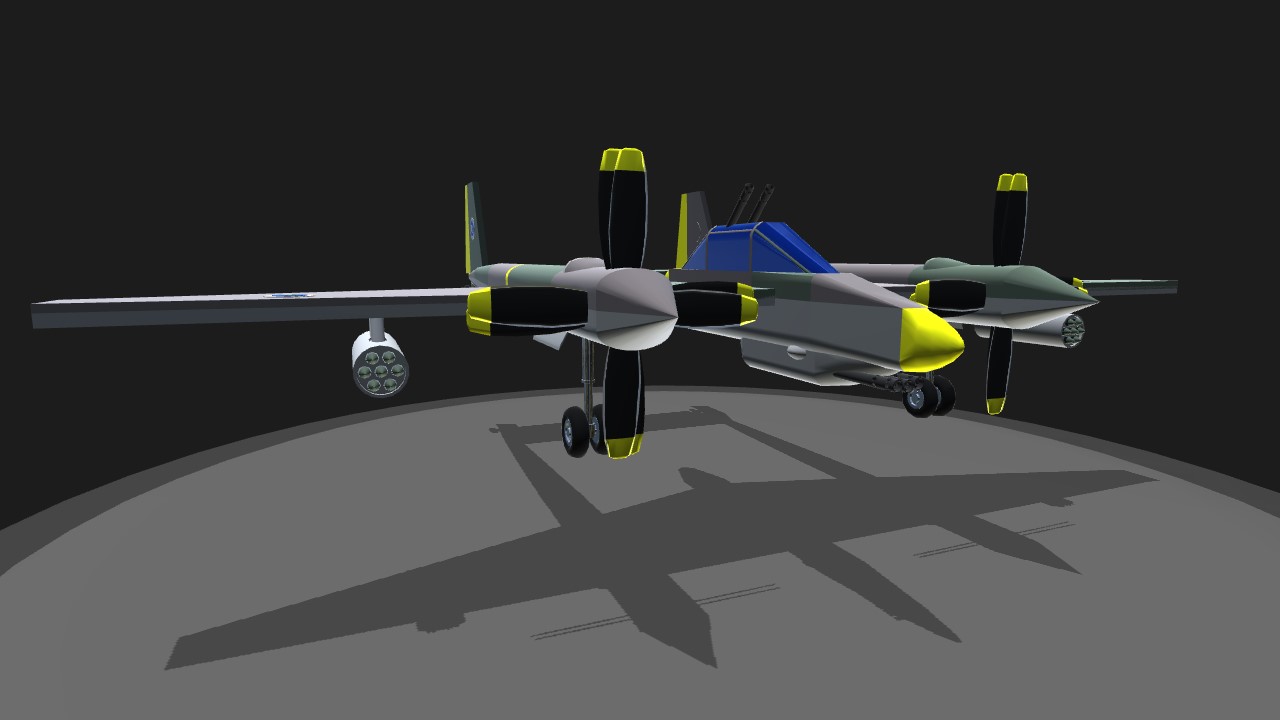
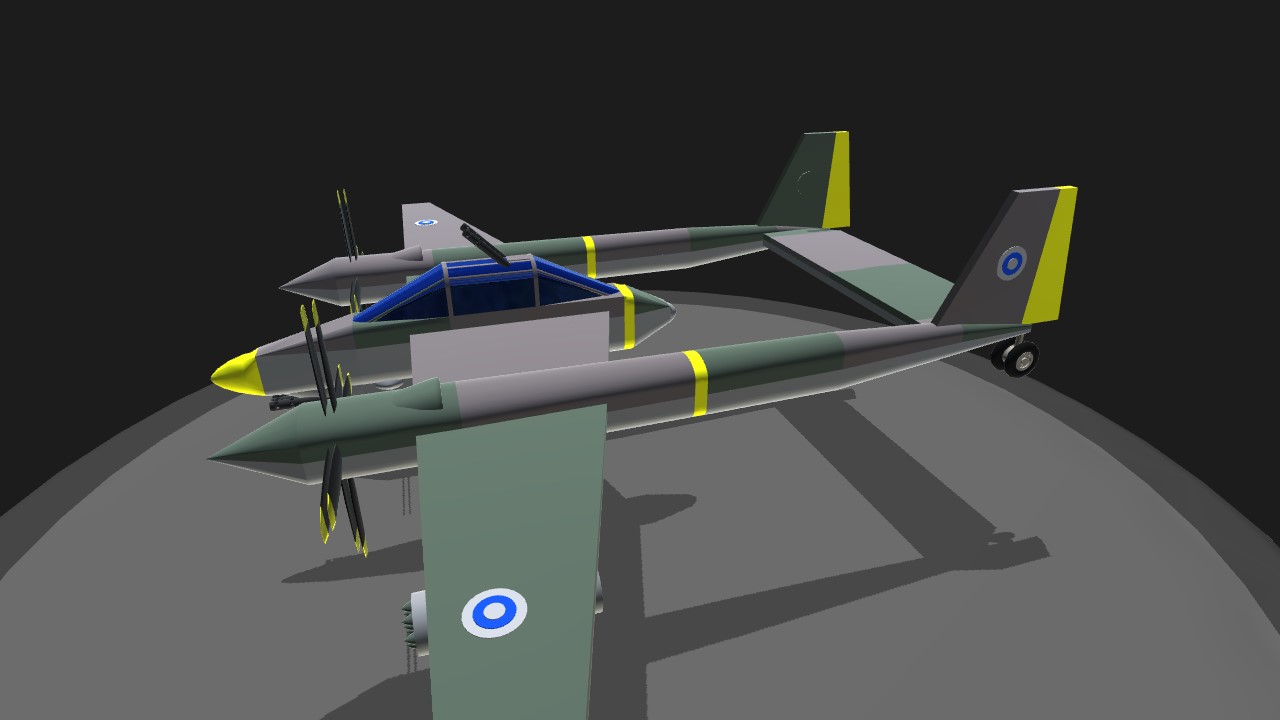
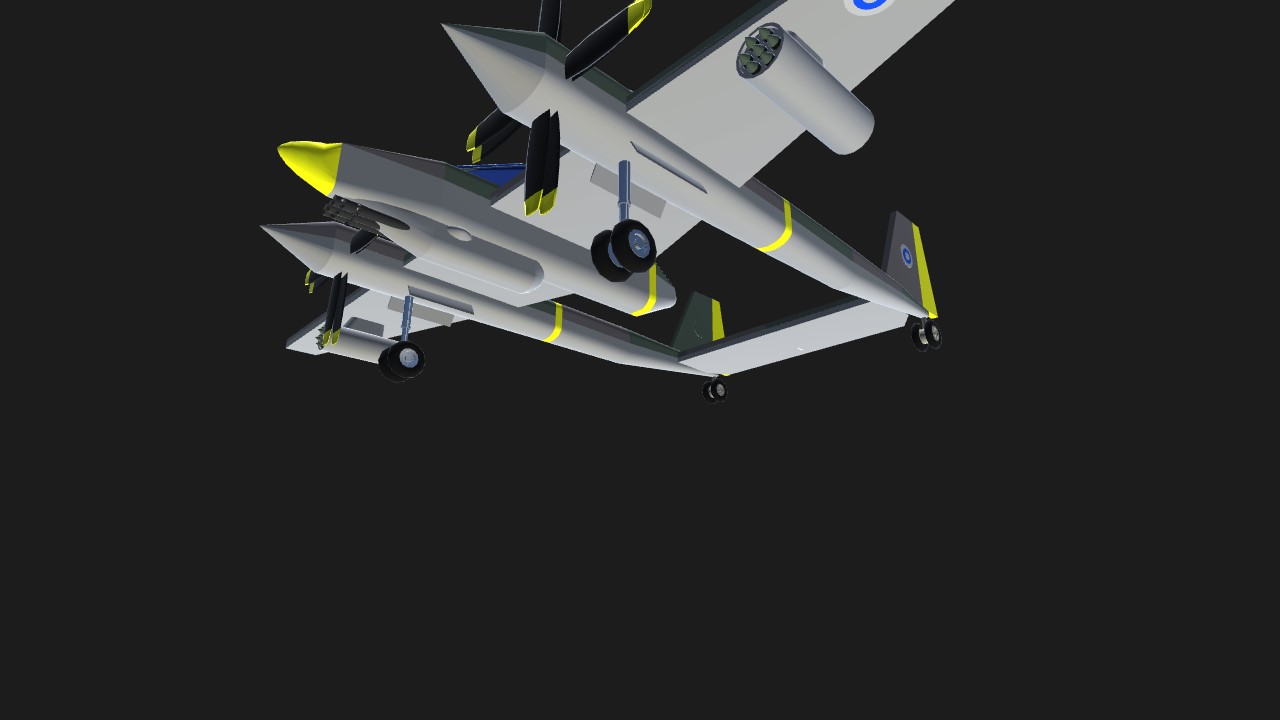

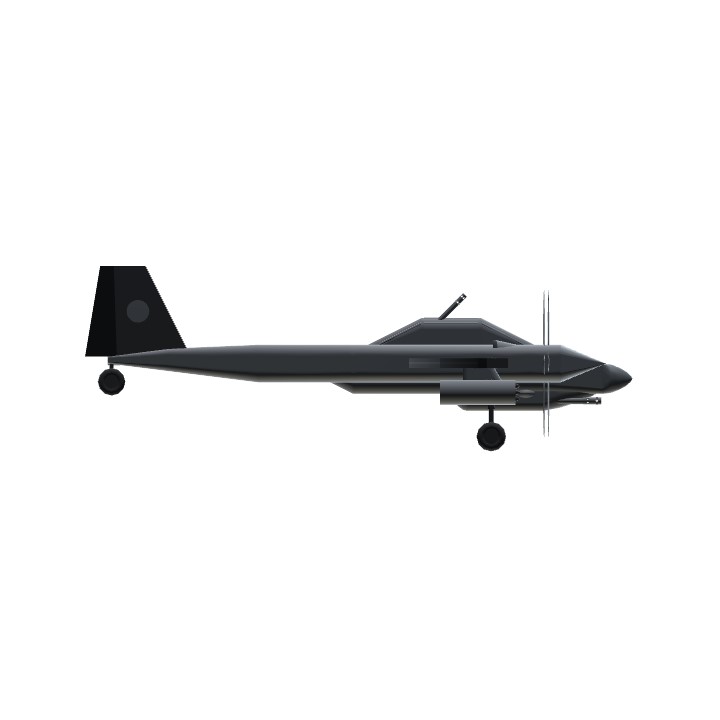
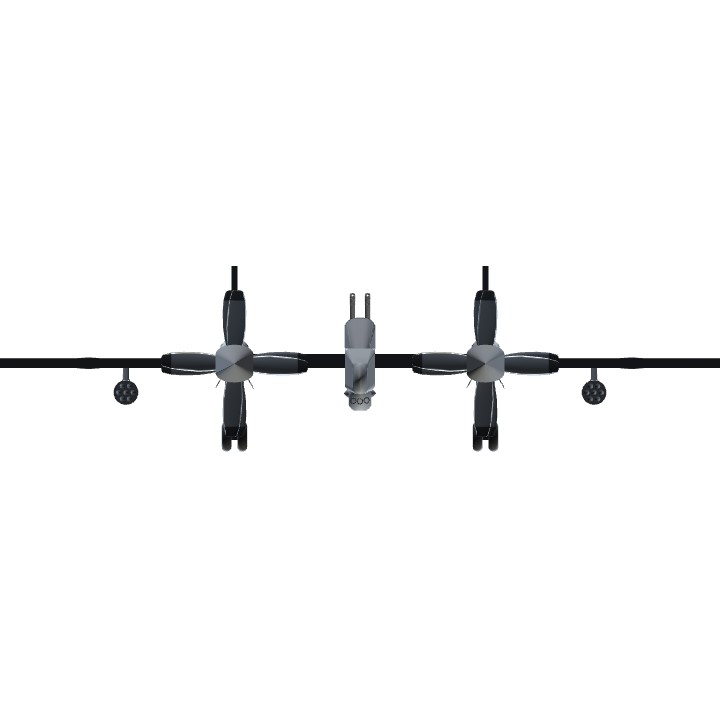
cooool...
and are you following me?
Yeah. I felt some parts would have been better on a forum post. @DragonAerotech
Thank you for your' upvotes and support, @MrVaultech & @ccooper!
@Pilotmario lol Thanks, though even I admit I went overboard with the story this time.
Amazing story as usual!
@TheOwlAce Of course you can. ^_^
@DragonAerotech Well I might then. May I steal the take off flaps as well?
@TheOwlAce Ah, feel free to steal them. They're MG131s if you didn't read the description. The forward firing ones are MG213Cs, a design that was in pre-production and wound up being the basis to the next gen aircraft cannon for the French, British and Americans. The F-5 still uses it apparently.
I might make an upgraded version with these types of guns. And I love the fast firing machine guns.
@DragonAerotech Well not a night fighter but one that can fire upwards.
@TheOwlAce Beat you to what?? O.o A new night fighter? I'd planned all along to make a night fighter version of the Lumimyrsky once I saw how radical her performance was. Heck, I've been considering a third version as a long range escort fighter. XD
Damn! You beat me to it!
Thanks for the support, @Liquidfox~ ^_^
Heheh ... thanks @MrMecha and got it @MrVaultech
Got it
@DragonAerotech
Thank you! @LouisEP
@MrVaultech